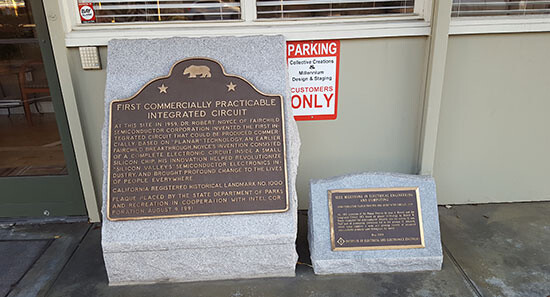There are two plaques at 844 E. Charleston Road in Palo Alto—one from the Institute of Electrical and Electronics Engineers (IEEE) and one from the state of California—commemorating it as the place where Fairchild Semiconductor revolutionized computer manufacturing in 1959. While the IEEE plaque emphasizes the ingenious planar process developed by Fairchild’s Jean Hoerni and Robert Noyce, the state of California’s plaque documents this site as the birthplace of the first “commercially practicable” integrated circuit (presumably in comparison to earlier, commercially disappointing circuits).
Aside from some markers for groundwater monitoring wells on the pavement, there isn’t any signage for the restrictive covenant issued for 844 E. Charleston by the California Regional Water Quality Control Board (RWQCB) in January of last year.1 It prohibits the operation of day-care centers, elder-care centers, hospitals, and K–12 schools on the site due to ongoing remediation of contaminated groundwater and soil on the property. The volatile organic compounds discovered in the groundwater may not have been a result of Fairchild, who vacated the property in 1967, expanding to a larger manufacturing facility that, today, is mostly Google offices and a Superfund site. It could have been the work of the following tenant, Advalloy, a company focused on precision metal-stamping for semiconductor production, until going bankrupt in 1991.2 Both ended up being held liable for the contamination in 1989.
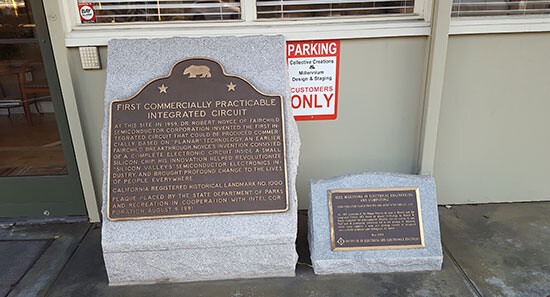

That a landmark of technical innovation sits atop toxic waste isn’t rare in Silicon Valley. There are twenty-three federal Superfund sites in Santa Clara County, which encompasses most of Silicon Valley, and these sites are connected to semiconductor and electronics manufacturing.3 There are dozens more groundwater and soil remediation sites monitored by the RWQCB, many of which—like 844 E. Charleston—are tech industry legacies. This history of the landscape usually meets with a flicker of recognition when explained—a reminder that the region earned the nickname “Silicon Valley” because of its role in manufacturing electronic hardware, before it became famous for the manipulation of electronics via software.4
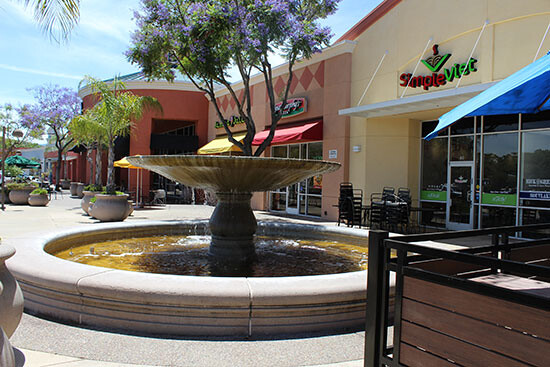

This dislocated sense of history suits a place that is often perceived less as historical landscape and more as a synecdoche for an entire way of life. Whether it’s being spoken of with overwhelming contempt or feverish faith, critics and champions alike tend to talk about Silicon Valley as a condition rather than a concrete geography. It isn’t a place that exists so much as something that happens to people and industries and other cities.
Consider the dozens of attempts to graft “Silicon” onto neighborhoods and regions throughout the world: there are Silicon Roundabouts, Alleys, Slopes, Shipyards, Forests, and Fjords. My personal favorite is the redundant “Silicon Desert” of the Phoenix metropolitan area, which is somehow not a reference to the extraction of raw silica from sand. Unlike the original, these new Silicons don’t refer to manufacturing legacies but are instead gestures of sympathetic magic, summoning images of forward-thinking, high-minded innovation, well-appointed open-plan offices, and the ostensibly good jobs they contain.5
For critics, the wholesale export of Silicon Valley culture also means exporting a blithe libertarian ruthlessness cloaked in idealism and technocratic certainty. Headlines diagnose the Valley in various ways—“Silicon Valley Has An Arrogance Problem,” “Welcome to the New Feudalism,” “Is Silicon Valley Saving the World or Just Making Money?”6 A central characteristic of many of these criticisms is insidiousness—an expectation that beneath a shiny surface inlaid with the best intentions lies an ugly truth.
This rhetorical Silicon Valley didn’t emerge from a vacuum—or, it emerged from a very particularly designed and contained vacuum, which itself emerged from specific conditions and actors in postwar Northern California. Signifying global industries with geographical shorthand isn’t new: Wall Street means finance as surely as Hollywood means cinema—but history is the price of such abbreviations. Studying Wall Street’s well-established origins in the slave trade can offer a clearer understanding of the dehumanizing and frequently racist origins of financial accumulation. And a closer examination of the historical landscape of Silicon Valley relocates its corresponding ideology within the larger histories of industrial manufacturing, labor struggles, and environmental damage. No landscape cultivates insidiousness better than suburbs laden with toxic waste.


While some industrial manufacturing sites have been demolished and replaced by yet more strip malls and offices, many were designed to deny their industrial past. Stanford Industrial Park is now Stanford Research Park, a parcel of land set aside by Stanford University in 1951 for technology companies in then-still-largely-agricultural Palo Alto. Stanford Industrial Park followed a postwar architectural trend described by Louise Mozingo as “pastoral capitalism,” in which the development of new managerial hierarchies (i.e., middle management) and growing suburbanization encouraged the development of the bucolic corporate campus, which effectively harnessed American ideals about the pastoral landscape to “[subsume] the capitalist enterprise into the pastoral suburb’s implied moral order.”7 Over the course of its development, Stanford codified increasingly specific regulations for landscaping and architecture in the park, as documented by John A. Findlay in Magic Lands: Western Cityscapes and American Culture After 1940:
Regulations called for relatively low buildings (usually a thirty-five-foot maximum) that were appropriate to the topography; parklike expanses of lawn, seeded with “random” rather than “stylized” plantings of trees; rows of foliage to screen all pavement, blank walls, mechanical and electrical equipment, trash containers, storage areas, and loading docks; underground utility lines; “complete concealment” of storage tanks, air-conditioning equipment, ductwork, generators, and transformers, and minimal use of signs (“the fewer the smaller the better”).8
Similar regulations were adopted by other cities in Santa Clara County. This atmosphere was meant to attract what one 1951 land use report called “light industry of a non-nuisance type”9—a form of industry that David Packard described as attracting a “better class of workers.” Instead of smokestacks and smog, there would be clean rooms and campuses. Prior to World War II, Santa Clara County was first shaped by the Gold Rush, incarnated locally in the New Almaden quicksilver mine in San Jose. It was then shaped by agriculture: for much of the early twentieth century, the region was the top producer of dried, canned, and fresh fruit. These industries employed a largely nonwhite, immigrant labor force working under deplorable conditions for meager wages, whose organizing efforts were frequently suppressed. Presumably this was the point of comparison for Packard when he spoke of that “better class of workers.”
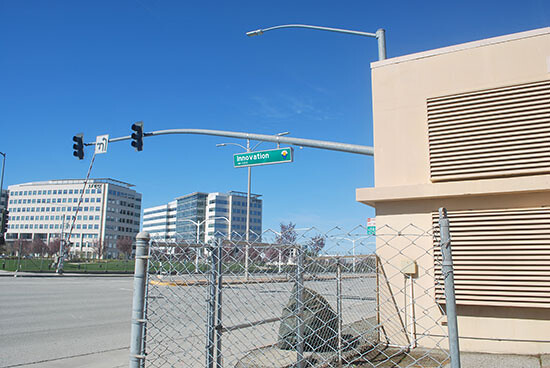

Non-nuisance, light industry flourished in the following decades thanks to a confluence of support from institutions like Stanford and the Department of Defense, flush with the rise in research and development spending after Sputnik in 1957. Electronics, first developed for defense, soon expanded to civilian applications, and the electronics industry rapidly became a top employer in the region. According to a 1979 report from the Project on Health and Safety in Electronics (PHASE), 26.3 percent of Santa Clara County’s jobs in 1977 were in the electronics industry—of which 84 percent of were in manufacturing, meaning that electronics manufacturing alone accounted for 22 percent of the county’s employment.10
Although early Silicon Valley was an industrial manufacturing powerhouse, its public image retained the idealism exemplified by the Stanford Industrial Park. Sometimes industrial pragmatism and pastoral aesthetics harmonized. Silicon chip manufacturing at scale requires a lot of chemicals—from the acids used to etch chips to solvents used to clean them. Burying these chemicals in underground storage tanks was officially a matter of fire safety, but it also made the industry look far less industrial, safer, a non-nuisance.
The underground storage tanks leaked into groundwater aquifers, some of which provided drinking water to households in Santa Clara County. In 1981, trichloroethane (TCA) was discovered in the water supply of the Los Paseos neighborhood of South San Jose, serving some 16,500 households. It was estimated that 14,000 gallons of TCA and 44,000 gallons of other solvents and toxic chemicals had leaked from storage tanks at a Fairchild Semiconductor facility at 101 Bernal Road.11 After the leak was disclosed, Los Paseos residents documented thirty-four miscarriages and thirty-one cases of children born with birth defects.


Studies conducted in response to the community’s demand for answers and accountability offered little of either. While one study observed a rate of spontaneous abortion in Los Paseos at more than twice that of a control group,12 other studies conducted around the Los Paseos incident could not conclusively prove a connection between the Fairchild spill and the neighborhood’s health problems. This was due to absent information: a lack of conclusive studies on the potential harms of TCA, a lack of ambient air data to rule out the possibility of air pollution as a contributing factor, a lack of information about the exact duration of the leak. Although the leak was discovered and documented in 1981, the California Department of Health Services report on it noted that Fairchild’s attorneys claimed it was unable to provide 1979 and 1980 meter readings for the solvent tank in question because records were “lost in an acid spill accident”—the semiconductor industry equivalent, perhaps, of speakers losing their grip on the back of a truck.13
In general, most of the aquifers affected by these chemical leaks weren’t part of a drinking water supply. (To explain why Santa Clara County gets most of its drinking water from the Hetch Hetchy reservoir requires a separate essay—no, probably a dissertation—on water politics in California, which not for nothing formed the basis for Polanski’s Chinatown.) Today, these cleanup sites pose a public health harm primarily as “vapor plumes”—the chemicals underground rise to the surface and are released into the atmosphere as vapor, sometimes getting into the ventilation systems of buildings and households. In 2013, workers at Google offices at the Middlefield-Ellis-Whisman Superfund site were exposed to excessive amounts of trichloroethylene (TCE) via vapor plumes.14


Before these harms were known to the public, they were well-established hazards of working in electronics manufacturing. For decades, assembly workers in Silicon Valley (of which 76.4 percent were women and 38 percent non-white, according to PHASE’s 1977 numbers) weren’t told what they were being exposed to on the job. Much of what’s known about these conditions is thanks to the work of groups like the Santa Clara Center for Occupational Safety and Health (SCCOSH). Through efforts like establishing the PHASE hotline and publishing dozens of guides to chemicals and their health hazards in multiple languages, SCCOSH’s approach focused on empowering and supporting workers, many of whom faced retaliation for challenging unsafe workplaces. Although these conditions persist throughout the industry, they are less and less familiar to US audiences, since manufacturing labor has left Sunnyvale, along with its promises and liabilities, for places like China and South Korea.
The US Occupational Health and Safety (OSHA) Act wasn’t enacted until 1971, and implementation of workplace regulations across states moved slower than the pace of technical innovation. A 1980 San Jose Mercury News report on health hazards in the industry featured a quote from a California OSHA official who noted that “over 200,000 chemicals are used in the United States. We have standards for about 2,000.”15 This, combined with the highly secretive and competitive nature of the semiconductor industry, was a popular argument for industry self-regulation. A similar devotion to business secrets and the use of innovation as instrument of plausible deniability continues in today’s tech industry, where culpability has moved up the stack from hardware to platforms. Instead of chemicals, this tier of industry closely guards hundreds of thousands of lines of code, and no engineer, product manager, or executive can be held accountable when that code produces, for example, disparate and racist outcomes for users.16
At the toxic cleanup sites I visited in search of the material history of Silicon Valley, evidence of environmental cleanup is often located behind slatted chain-link fences. Many groundwater remediation projects use what’s known as a “pump and treat” system. Contaminated water is pumped into filtration tanks that collect volatile organic compounds before returning the filtered water to the soil. One cluster of these tanks sits in a parking lot on Tantau Road, directly across from Apple’s still-under-construction Campus II, whose renderings promise a gleaming glass donut lifting out of a forest. When completed, the 2.8-million-square-foot building will span 176 acres. Its renderings don’t account for the houses along Homestead Road or the Cupertino Village strip mall and Hilton Garden Inn across the street. Walking the future perimeter of this new citadel, I imagined a business trip where an executive would never leave a one-mile radius of the new campus. For this blinkered visitor, the slatted fences and weird 1970s architecture of the region would remain hidden and peripheral, mere hints of the possibility that whatever constitutes “Silicon Valley” has longer and deeper historical foundations than some perpetual future perfect at 1 Infinite Loop (the address of Apple’s current main campus).
The easily ignored, older landscapes evoke an irrational affection in me, their brutalist gestures made clumsy by their modest scale, drab color schemes, and apparently limited upkeep. It’s evidence of a humbler, more eccentric tech industry that stands in contrast to the steel-and-glass behemoths built by Facebook and Apple. The new tech campuses are places I find embarrassing and sad—an adolescent, unfinished understanding of grandeur or luxury installed forever in the landscape. This architecture assumes that character is a collection of well-placed Bézier curves, reclaimed wood, and whatever’s more expensive than Design Within Reach.
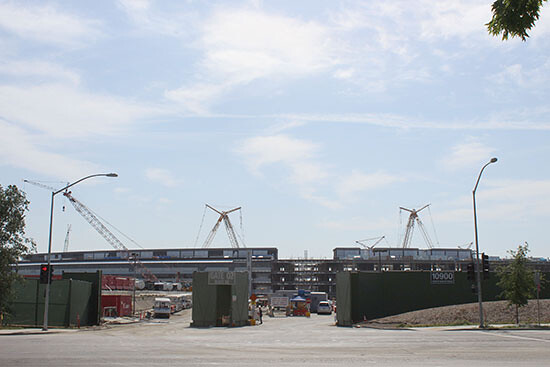

But even the older Silicon Valley architecture is an imposition drawn from misleading historical narratives of computer history in which earnest, bearded men executed cool ideas for their own sake, quietly aware of their corporate and military-industrial funding but resolutely higher-minded in their ambitions. We could call this Valley history, as exemplified by Mountain View’s Computer History Museum, whose central permanent exhibition, “Revolution: The First 2000 Years of Computing,” proudly showcases prototypes of seminal analog machines and a replica Xerox PARC beanbag chair, but has almost nothing about assembly, supply chains, or mass manufacture, and less than nothing about groundwater contamination. Valley history lionizes the iPhone’s designers but leaves out Apple’s experts in supply-chain management and logistics, and positively erases the millions of workers toiling—and striking—throughout Asia. Valley history is written into the region’s industrial landscapes, designed deliberately to erase an industrial workforce, where the hard part happens somewhere else and the burdens and hazards are borne by someone else at their own risk.
If the architecture of Silicon Valley obscures its toxic legacy by concealing information, public records obscure it by providing too much. Both the EPA and the RWQCB furnish voluminous online records on cleanup sites, mostly within PDF reports written by and for regulators and environmental engineers. These records do not answer the question of whether these sites are harmful so much as they testify to how difficult it is to consistently measure harm (in geology and water systems, very). Although they depict subsurface damage, the maps in the reports are generally two-dimensional, visualizing groundwater plumes as broad polygons of potentially unsafe vapors hovering over a given area like the angry ghost of an entire class. Remediation is a long-term, intensive maintenance project, one that does not correspond easily to the timelines of app development and social media news cycles. It’s no wonder Silicon Valley’s toxic legacy is not better understood by a public accustomed to an industry and a landscape that champions frictionlessness.
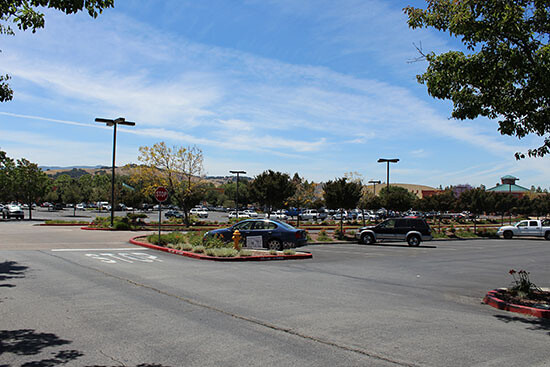

While trying to parse a morass of environmental cleanup reports, winding suburban itineraries, and dozens of photographs of mostly uninteresting real estate, I keep returning to the Stanford Industrial Park and that phrase about its non-nuisance light industry. Following “light industry” away from its literal application in manufacturing and down the more romantic path its cadence suggests, one could argue that all kinds of industries have since been subsumed by light industry—insofar as so many kinds of labor now consist in facilitating the transmission of light across great distances.17 As the effects of light industry (both beneficial and harmful) become increasingly diffused, so too do things like history and accountability. And it’s this atmosphere of diffusion that draws me to the landscapes and lives that are rarely canonized in the history of technology but remain integral to it.
Raquel Sancho, the director of SCCOSH’s Working Women’s Leadership Project (We-LeaP), pointed out in a 2004 interview that
[without] workers, all production tools and materials are just so much machines, metal and plastic. All the exotic chemicals like arsenide for creating computer chips and electronic parts are simply so much liquid, absolutely without value until the worker uses his or her labor to turn someone’s product design into reality.18
Silicon Valley is finally this contradiction: its technological monoliths strain upwards toward the future, while a toxic political history persists just below ground.
California Regional Water Quality Control Board, “Covenant and Environmental Restriction of Property: 844 E Charleston Road, Palo Alto, California,” January 14, 2015 →
California Regional Water Quality Control Board, “Internal Memo: Advalloy Inc. And Fairchild Camera and Instrument,” January 3, 1990 →
Environmental Protection Agency, Pacific Southwest Region 9, “Cleanup Sites in California” →. Note that the EPA lists sites by city, not county; the specific cities in question are Cupertino, Mountain View, Palo Alto, San Jose, Santa Clara, and Sunnyvale.
David Laws, “Who Named Silicon Valley?” Computer History Museum, January 11, 2015 →
See Natalie Kane, “Silicon Cargo Cults,” Haunted Machines February 29, 2015 →.
Louise A. Mozingo, Pastoral Capitalism: A History of Suburban Corporate Landscapes (Cambridge, MA: MIT Press, 2011), 11.
John M. Findlay, Magic Lands: Western Cityscapes and American Culture After 1940 (Berkeley: University of California Press, 1992), 134.
Ibid., 132.
Santa Clara Center for Occupational Health (SCCOSH) and Silicon Valley Toxics Coalition (SVTC) Records, MSS-2007-04-06, San José State University Library Special Collections & Archives.
David Naguib Pellow and Lisa Sun-Hee Park, Silicon Valley of Dreams: Environmental Injustice, Immigrant Workers, and the High-Tech Global Economy (New York: New York University Press, 2002), 73–74.
Margaret Deane, Shanna H. Swan, John A. Harris, David M. Epstein, and Raymond R. Neutra, “Adverse Pregnancy Outcomes in Relation to Water Contamination, Santa Clara County, California, 1980–1981,” American Journal of Epidemiology,vol. 129, no. 5, 902.
Santa Clara Center for Occupational Health (SCCOSH) and Silicon Valley Toxics Coalition (SVTC) Records.
Susanne Rust and Matt Drange, “Google Workers at Superfund Site Exposed,” SFGate, March 19, 2013 →
Michael Malone and Susan Yoachum, “The Chemical Handlers,” Mercury News, April 7, 1980.
See Latanya Sweeney, “Discrimination in Online Ad Delivery,” Communications of the ACM, vol. 56, no. 5, 44–54; and Julia Angwin, Jeff Larson, Surya Mattu, and Lauren Kirchner, “Machine Bias,” ProPublica, May 23, 2016 →
See James Bridle, “The Secure Transport of Light,” booktwo.org, April 17, 2013 →
Santa Clara Center for Occupational Health (SCCOSH) and Silicon Valley Toxics Coalition (SVTC) Records.
